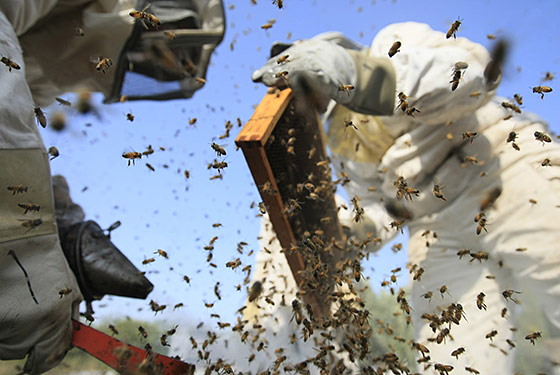 Byron Williams, a 45-year-old ex-felon, exploded onto the national stage in the early morning hours of July 18. According to a police investigation, Williams opened fire on California Highway Patrol officers who had stopped him on an Oakland freeway for driving erratically.
Byron Williams, a 45-year-old ex-felon, exploded onto the national stage in the early morning hours of July 18. According to a police investigation, Williams opened fire on California Highway Patrol officers who had stopped him on an Oakland freeway for driving erratically.
For 12 frantic minutes, Williams traded shots with the police, employing three firearms and a small arsenal of ammunition, including armor-piercing rounds fired from a .308-caliber rifle.
When the smoke cleared, Williams surrendered; the ballistic body armor he was wearing had saved his life. Miraculously, only two of the 10 CHP officers involved in the shootout were injured.





 A September 23, 2010 article in the New England Journal of Medicine announced that, finally, the FDA has stepped forward and decided on regulatory action for Avandia, a diabetes drug that last year claimed 1,354 lives as a result of cardiac-associated problems.
A September 23, 2010 article in the New England Journal of Medicine announced that, finally, the FDA has stepped forward and decided on regulatory action for Avandia, a diabetes drug that last year claimed 1,354 lives as a result of cardiac-associated problems. Yesterday's New York Times featured a heartwarming ending to the years-long murder mystery of what was causing Colony Collapse Disorder (CCD) among honeybees. Experts suspected pesticides or genetically modified foods, but the article reported that the University of Montana's Bee Alert Team, working alongside the Army, found the cause: the combined effects of a virus and fungus. Data sharing! Chance discoveries! Honeybees live on to sting another day! But according to Fortune, there were a couple of details left out of the front-page story. The team's lead investigator, Dr. Jerry Bromenshenk, may have previously dropped out of testifying in a class-action lawsuit after he received a significant research grant from the pharmaceutical giant Bayer. For years, beekeepers have tried to pursue legal action against Bayer Crop Science over their pesticides, in particular a type of neurotoxin that gets rids of insects by attacking their nervous systems. The beekeepers allege that the pesticides disoriented and killed their hives. One of the markers of CCD is a bee's tendency to fly off in a random direction before it dies.
Yesterday's New York Times featured a heartwarming ending to the years-long murder mystery of what was causing Colony Collapse Disorder (CCD) among honeybees. Experts suspected pesticides or genetically modified foods, but the article reported that the University of Montana's Bee Alert Team, working alongside the Army, found the cause: the combined effects of a virus and fungus. Data sharing! Chance discoveries! Honeybees live on to sting another day! But according to Fortune, there were a couple of details left out of the front-page story. The team's lead investigator, Dr. Jerry Bromenshenk, may have previously dropped out of testifying in a class-action lawsuit after he received a significant research grant from the pharmaceutical giant Bayer. For years, beekeepers have tried to pursue legal action against Bayer Crop Science over their pesticides, in particular a type of neurotoxin that gets rids of insects by attacking their nervous systems. The beekeepers allege that the pesticides disoriented and killed their hives. One of the markers of CCD is a bee's tendency to fly off in a random direction before it dies. It is billed as a symbol of the future Palestine: a modern, middle-class city of orderly streets, parks and shopping plazas rising in the hills of the West Bank, ready for independence, affluence and peace. But the $800-million project has hit a snag: Palestinians say construction of the city of Rawabi depends on getting an access road, which can't go ahead without Israeli permission.
It is billed as a symbol of the future Palestine: a modern, middle-class city of orderly streets, parks and shopping plazas rising in the hills of the West Bank, ready for independence, affluence and peace. But the $800-million project has hit a snag: Palestinians say construction of the city of Rawabi depends on getting an access road, which can't go ahead without Israeli permission. In parts of eastern Kentucky, the pictures coming out of Hungary of the red sludge that roared from a factory's reservoir, downstream into the Danube River, are all too reminiscent of what happened a decade ago this week.
In parts of eastern Kentucky, the pictures coming out of Hungary of the red sludge that roared from a factory's reservoir, downstream into the Danube River, are all too reminiscent of what happened a decade ago this week. Master Sgt. Toni Jaffe was known as "the M&M lady" because she decorated her office cubicle with keepsakes of the confection's advertising characters. However, the treats she dispensed were sweeter than candy and are now the subject of a criminal investigation.
Master Sgt. Toni Jaffe was known as "the M&M lady" because she decorated her office cubicle with keepsakes of the confection's advertising characters. However, the treats she dispensed were sweeter than candy and are now the subject of a criminal investigation. The arrest by the FBI of Elliot Doxer, a financial employee of the Cambridge-based Akamai Technologies, Inc. for trying to sell company secrets to officials of the Israeli Consulate in Boston has once again raised the profile of the firm that was also at the center of the 9/11 terrorist attacks.
The arrest by the FBI of Elliot Doxer, a financial employee of the Cambridge-based Akamai Technologies, Inc. for trying to sell company secrets to officials of the Israeli Consulate in Boston has once again raised the profile of the firm that was also at the center of the 9/11 terrorist attacks. Many Americans view their country and its soldiers as the "good guys" spreading "democracy" and "liberty" around the world. It just ain't so.
Many Americans view their country and its soldiers as the "good guys" spreading "democracy" and "liberty" around the world. It just ain't so. In a first for a former Guantánamo captive freed by a federal judge, a Syrian man now living in Europe is suing the U.S. government for damages from what he calls a ``Kafkaesque nightmare.''
In a first for a former Guantánamo captive freed by a federal judge, a Syrian man now living in Europe is suing the U.S. government for damages from what he calls a ``Kafkaesque nightmare.''






























